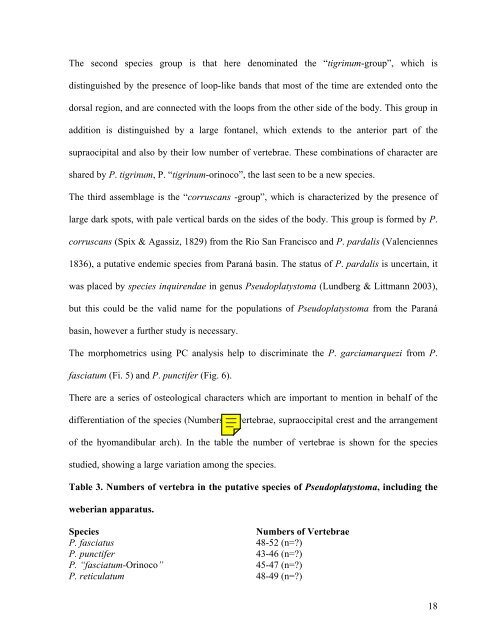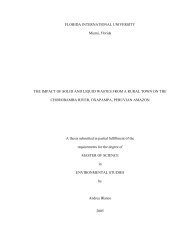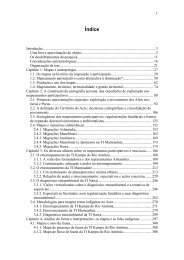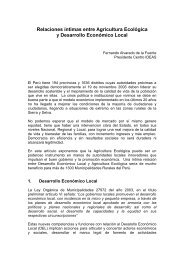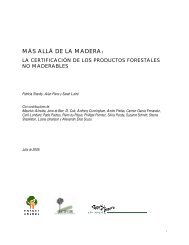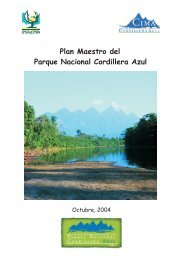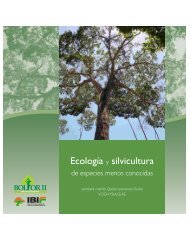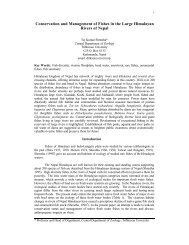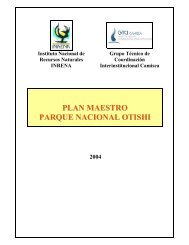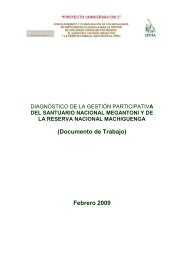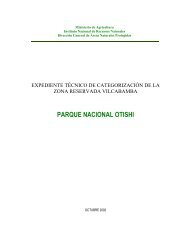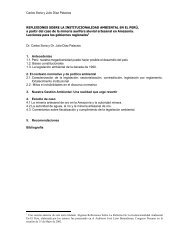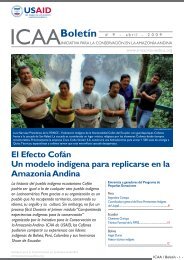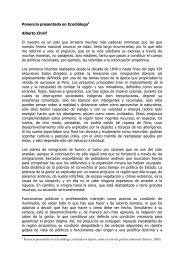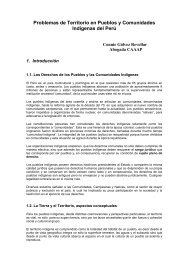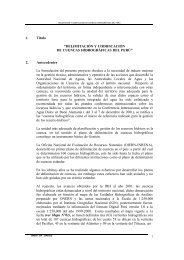PSEUDOPLATYSTOMA GARCIAMARQUEZI, A NEW SPECIES OF ...
PSEUDOPLATYSTOMA GARCIAMARQUEZI, A NEW SPECIES OF ...
PSEUDOPLATYSTOMA GARCIAMARQUEZI, A NEW SPECIES OF ...
You also want an ePaper? Increase the reach of your titles
YUMPU automatically turns print PDFs into web optimized ePapers that Google loves.
The second species group is that here denominated the “tigrinum-group”, which is<br />
distinguished by the presence of loop-like bands that most of the time are extended onto the<br />
dorsal region, and are connected with the loops from the other side of the body. This group in<br />
addition is distinguished by a large fontanel, which extends to the anterior part of the<br />
supraocipital and also by their low number of vertebrae. These combinations of character are<br />
shared by P. tigrinum, P. “tigrinum-orinoco”, the last seen to be a new species.<br />
The third assemblage is the “corruscans -group”, which is characterized by the presence of<br />
large dark spots, with pale vertical bards on the sides of the body. This group is<br />
formed by P.<br />
corruscans (Spix & Agassiz, 1829) from the Rio San Francisco and P. pardalis (Valenciennes<br />
1836), a putative endemic species from Paraná basin. The status of P. pardalis is uncertain, it<br />
was placed by species inquirendae in genus Pseudoplatystoma (Lundberg & Littmann 2003),<br />
but this could be the valid name for the populations of Pseudoplatystoma from the Paraná<br />
basin, however a further study is necessary.<br />
The morphometrics using PC analysis help to discriminate the P. garciamarquezi from P.<br />
fasciatum (Fi. 5) and P. punctifer (Fig. 6).<br />
There are a series of osteological characters which are important to mention in behalf of the<br />
differentiation of the species (Numbers of vertebrae, supraoccipital crest and the arrangement<br />
of the hyomandibular arch). In the table the number of vertebrae is shown for the species<br />
studied, showing a large variation among the species.<br />
Table 3. Numbers of vertebra in the putative species of Pseudoplatystoma, including the<br />
weberian apparatus.<br />
Species Numbers of Vertebrae<br />
P. fasciatus 48-52 (n=?)<br />
P. punctifer<br />
43-46 (n=?)<br />
P. “fasciatum-Orinoco” 45-47 (n=?)<br />
P. reticulatum 48-49 (n=?)<br />
18


